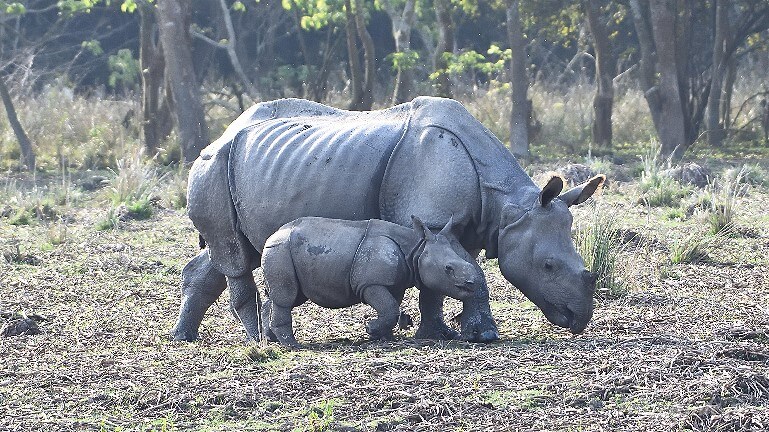
Pobitora Wildlife Sanctuary in Assam is home to India's rhinoceros
ZPobitora sanctuary, located in the Indian state of Assam in India an extremely interesting place for true connoisseurs of wildlife. But the most important thing in it is that at any time of the day and any time of the year, visitors to the Pobitora Nature Reserve will be able to see with their own eyes rare one-horned rhinos, which until recently were on the verge of destruction.
History of the Pobitora Wildlife Sanctuary
Having ridden an elephant through thickets of tall grass, along a path laid among beautiful lakes, adventure lovers may admire how migratory birds splash in the water next to rhinoceroses.
Those who decide to stay in the foresters' house, located next to Lake Haduk, will have the opportunity to watch the rhinos right from the windows of their room. After all, the small Pobitora Reserve, lost in the heart of Assam, is famous for the fact that here, on a tiny territory, these unique animals live more than in any other reserve in the world.
Five thousand birds, mostly white-bellied grouse, swayed on the waves of Pagladoba, a small lake in the heart of the Pobitora nature reserve in Assam. But this island of wildlife became famous not by birds, but by the fact that one-horned rhinos live here.
The Pobitora Reserve is located in the Nagaon district, in the Brahmaputra river valley. Once these lands were used only as a pasture for livestock, and until the early 70s, only local shepherds knew their name. However, due to the abundance of rhinoceros, the government of Assam decided in 1971 to declare the area a faunal reserve.
The locals welcomed the decision, as it meant for them the opportunity to get a job at the Ministry of Forestry. On July 16, 1987, Pobitora received the status of a reserve with an area of 38.85 km2. kilometers.
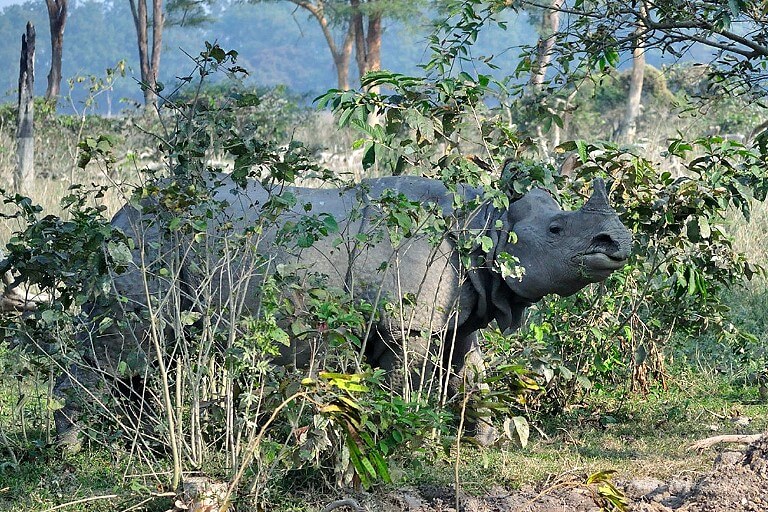
Pobitora lies on the plain. Like the Kazi-ranga National Park, it is covered with tall savannah grass, which is also called "elephant grass". Scattered throughout the reserve are small lakes, which the locals call bil, and hollows filled with water. Sometimes there are dry stream beds. Lake Haduk, where the administration of the reserve and the foresters' house is located, is actually a channel with a very slow current.
In 1986, 56 Indian rhinos lived in the reserve. Currently in 2022 according to Travel Guide there are more than 100 of them. According to existing calculations, there are 3.6 rhinos per square kilometer, and there is no other reserve in the world with such a high density of these animals. There are 2.8 rhinos per square kilometer in Kaziranga National Park.
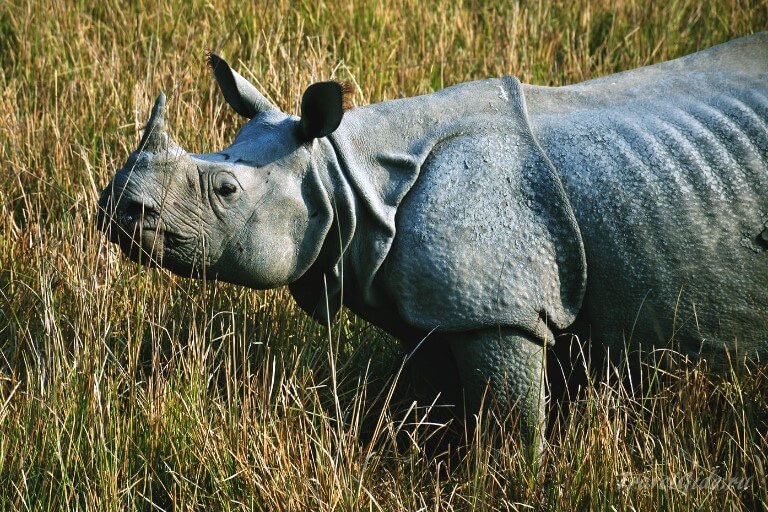
At any time of the day and year, visitors to Pobitora can admire rhinos. They can be seen even from the observation tower, located on the shores of Lake Haduk. However, after sunset, many animals leave the reserve and graze in the surrounding fields. They can go up to 10 kilometers away, and one rhinoceros has even reached the village of Goalpara, located 200 kilometers west of the reserve.
He was later caught and airlifted to Dudhwa National Park in Uttar Pradesh. Such transportation is carried out in accordance with the rhinoceros resettlement program. The fact that rhinos often go beyond the boundaries of the protected area indicates that their density is too high - 104 individuals are cramped for 38 square meters. kilometers. The reserve needs to be expanded again in order to save animals from poachers.
During the rainy season, a large part of its territory goes under water. Back in 1988, the flood was especially strong, and almost the entire reserve was flooded. Fortunately, most of the rhinoceroses found a refuge on the embankments along which the roads were laid, and therefore it was easier for the rangers to protect them from poachers.
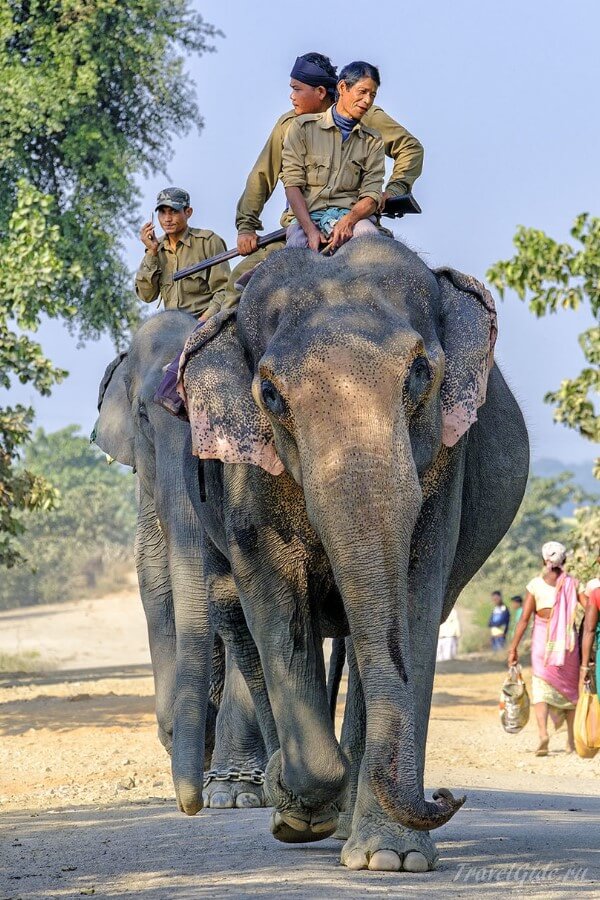
Then about 60 animals gathered on the central road leading from Haduk to Tulpung, in the heart of the protected area. Therefore, the leadership of the Ministry of Forestry decided not to tempt fate and build the main road in advance. This ensured the safety of the rhinoceros in case of severe flooding.
Animal world "Pobitora Wildlife Sanctuary"
Pobitora is not distinguished by the diversity of the animal world. Here, for example, there are no wild elephants, buffaloes or tigers, and even wild boars are rare. But despite the absence of predators, the animals still die - the floods are to blame. In 1988, when the reserve was flooded with water, about a thousand wild pigs tried to hide on elevated land and along the road laid on the western border of the reserve, but they failed to escape - they were killed by local residents.
The same fate befell several leopards and deer that had survived by that time. Grasslands are an ideal habitat for pig deer, forest thickets are chosen by muntsaks. Sambar and swamp deer are not found here. But marsh lynxes, foxes and feral buffaloes are found in abundance. The latter constantly graze in the reserve. Most of them, however, often visit the neighboring villages, and the peasants use them in their household.
Visitors to the reserve sometimes confuse them with wild buffaloes, although none of them have recently appeared in the vicinity of Pobitora. True, many people saw a very large buffalo that grazed along with local feral buffaloes. Perhaps he wandered here from the Laokhova nature reserve or the Kaziranga National Park. But Travelgide.ru does not recommend walking a person to approach feral buffaloes, as they are quite aggressive and can attack without the slightest reason.
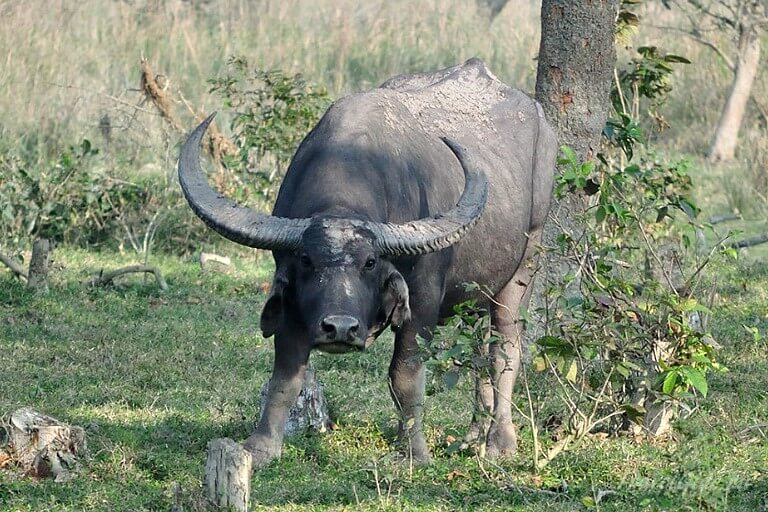
In the reserve you can see another interesting animal - fishing cat. Although their number is not properly determined, according to rough estimates, there are about thirty of them here. If you're lucky, then in the morning or evening dawn you will meet these animals on Lake Haduk, right next to the foresters' house or on some other lake. During the day they are extremely rare.
Until recently, one could see jackals. Once upon a time in Assam it was common to meet a jackal, but now their numbers are rapidly declining and their howling is no longer heard at night.
The reserve is home to many different birds. In winter, waterfowl living in the northern latitudes flock to Pobitory lakes. Small lakes like Pagladoba, whose area does not exceed 30 hectares in winter, are literally dotted with birds - their flocks cover the entire surface of the water.
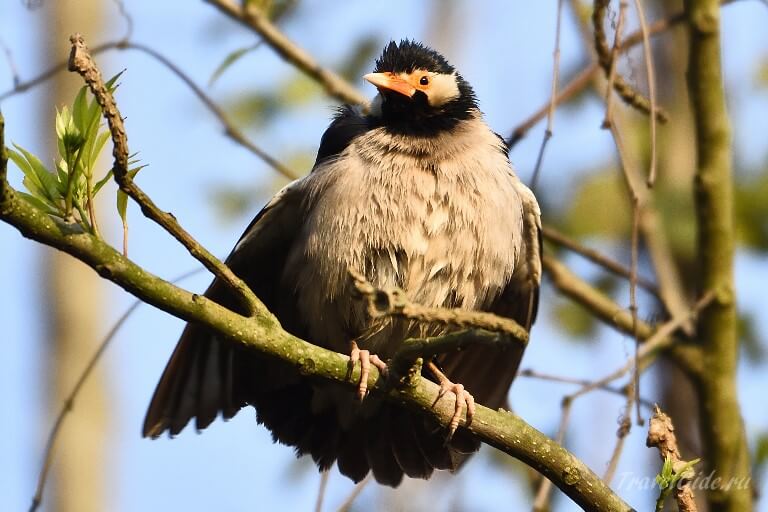
During trips there you can meet wild ducks, broad-nosed ducks, common teals, spotted ducks, pink and gray herons, little green and white herons, black-necked and Indian goiter storks, great cormorants, darters, small blue kingfishers, eagles, Brahmin kites , parakeets, pink-billed parrots, gray and spotted pigeons, red doves, common nightingales, gray-headed and forest lanes, sparrows, hoopoes, blue jays, brown and Tibetan shrikes, swallows, river terns, gray-headed lapwings, spotted owls, royal vultures, yellow-headed wagtails; black-headed orioles and other various birds. However, ornithologists may be of particular interest to the Bengal florican, which, except in Pobitor, can not be found anywhere else.
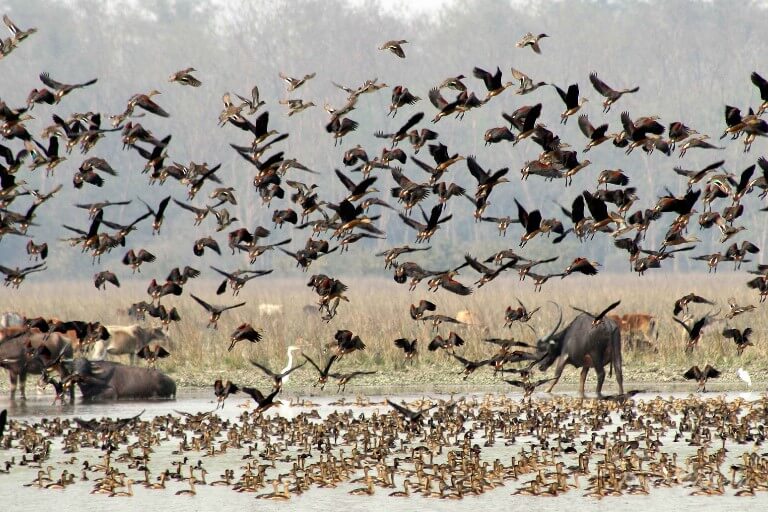
Until the end of the 80s of the last century, this reserve was little known. It was visited only by naturalists and employees from the Ministry of Forestry. Gradually, interest in the reserve grew and by 2020 it reached its historical peak. This is largely due to the proximity of the reserve to the city of Gauhati, which is only 50 kilometers away, so it takes only one day to travel.
Residents of the nearby city of Nagaon often come to Pobitora for picnics, especially during the winter months. Sometimes so many people accumulate here that this causes serious concern for the administration of the reserve. Frequent picnics on the shores of Lake Haduk led to the almost complete disappearance of thickets of tall grass, and because of this, fewer ducks began to fly here.
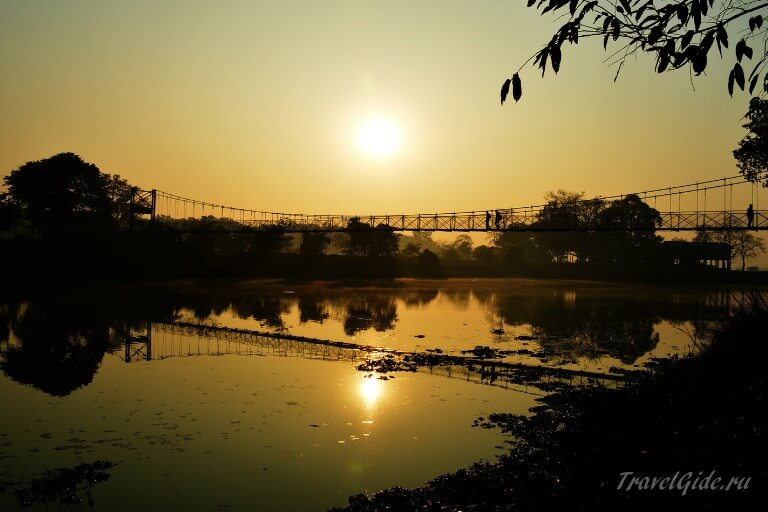
Like other reserves where rhinos live, Pobitora suffers from poachers. Over the past 5 years, they have killed three rhinos, and one of them - in broad daylight, not far from the reserve. In Pobitor and around it there are about twenty guard posts, where huntsmen are on duty guarding the local wildlife, and above all, rhinos. However, in order to actively fight against poaching, it is definitely necessary to think again about expanding the protected area.


